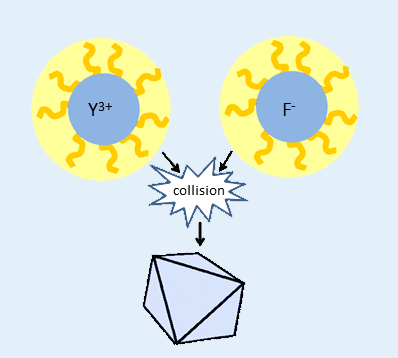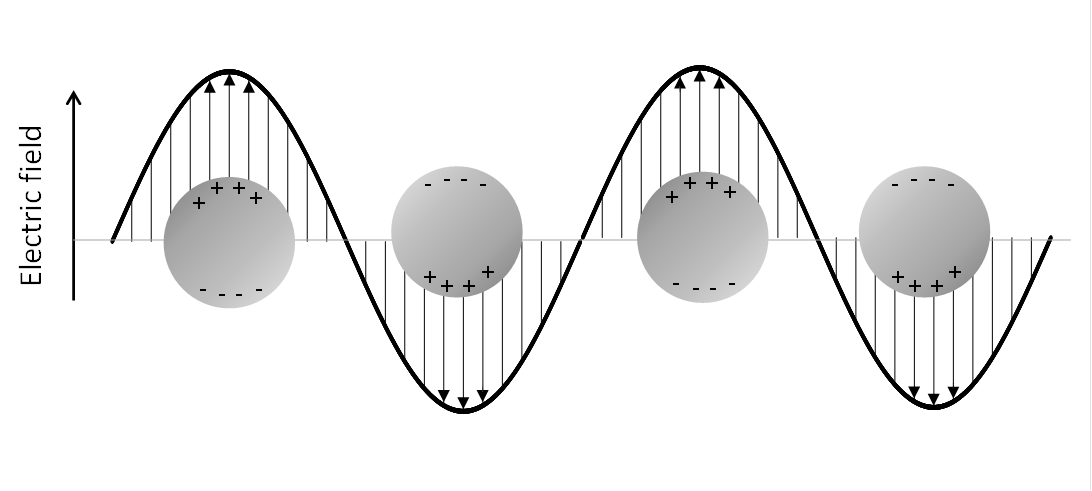

Assemblies of plasmonic nanoparticles
Metal nanoparticles interact strongly with light. Upon irradiation, the alternating electric field of the incident light induces the collective oscillation of the conducting electrons in the nanoparticles, known as the surface plasmon.
Block copolymers are known to form highly ordered periodic structures, such as the surface micelles illustrated below. We are using these structures as templates to direct the organisation of nanoparticles. The precise location of the nanoparticles within the block copolymer matrix depends largely upon their size. Notably, gold nanoparticles with a diameter of ~6 nm spontaneously assemble around the hydrophobic domains of the surface micelles to form nano-rings.
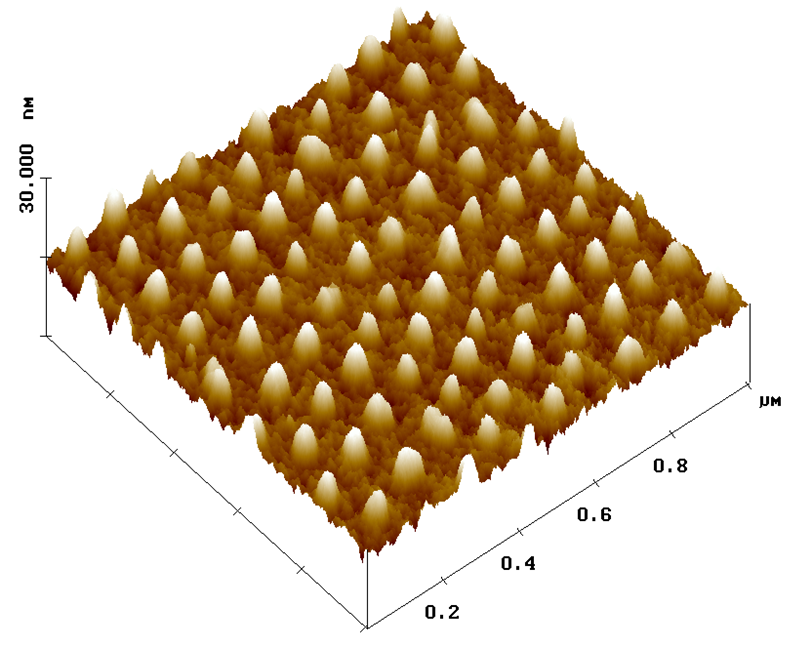
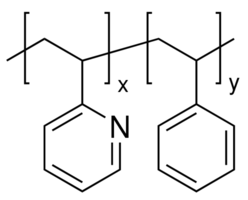
Surface micelles formed by the block copolymer PS-b-PVP.
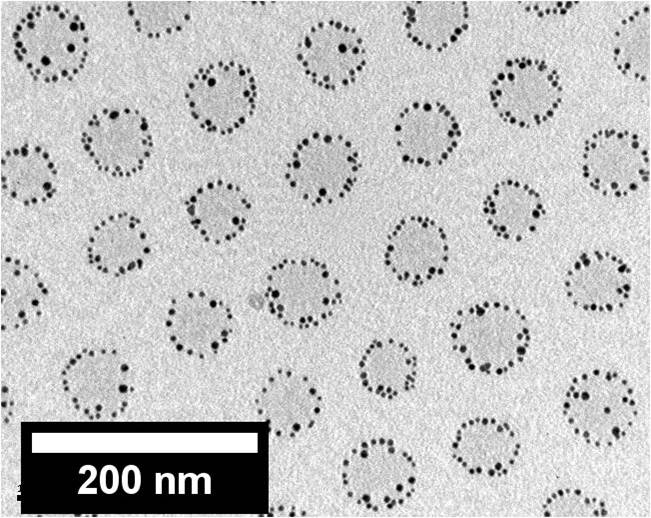
Gold nanoparticles organised in rings around the PS domains.
Plasmon coupling between assembled metal nanoparticles results in a shift in the characteristic frequency of the surface plasmon with respect to that of an isolated single particle. Importantly, the resonance frequency of the coupled modes is particularly sensitive to the local refractive index, opening the door to the potential application of the nano-rings as chemical sensors.
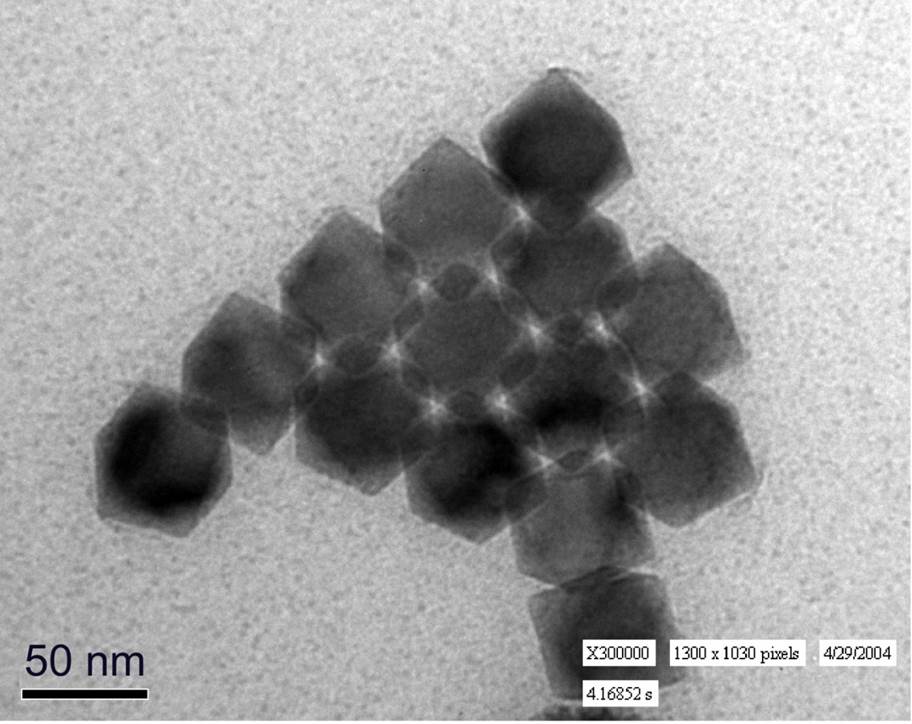
Lanthanide-doped nanoparticles
We are interested in the preparation of luminescent nanoparticles by doping with lanthanide ions. The unique luminescent properties of lanthanides arise from numerous electronic transitions within the partially filled 4f levels. We have shown that the precipitation of yttrium fluoride in the presence of reverse micelles results in the formation of single crystal nanoparticles of well-defined size, as illustrated by the transmission electron micrograph at the right. In addition, the reverse micelle synthesis allows for the unparalleled control of particle size as well as the preparation of particles with "core-shell" architectures.
